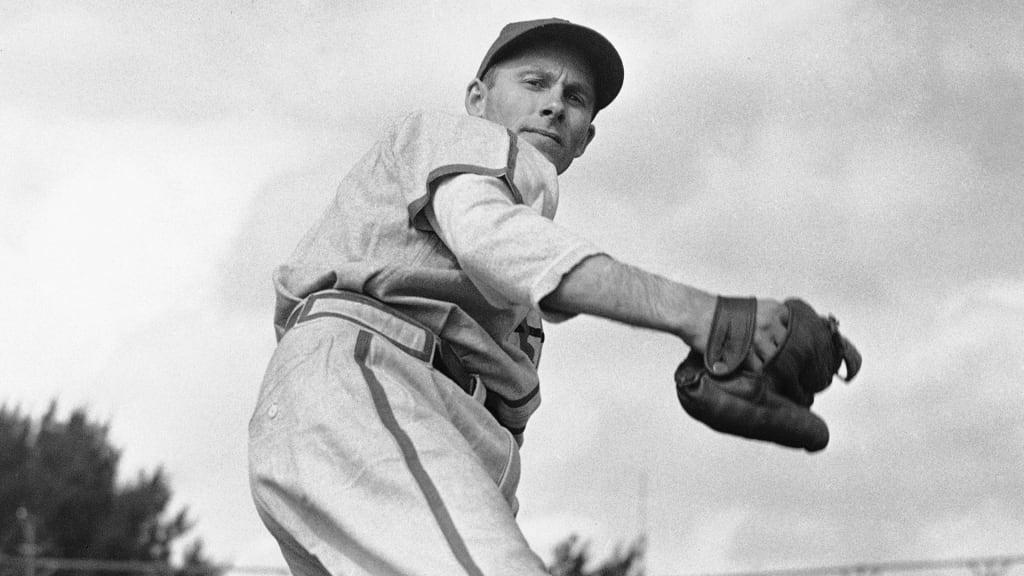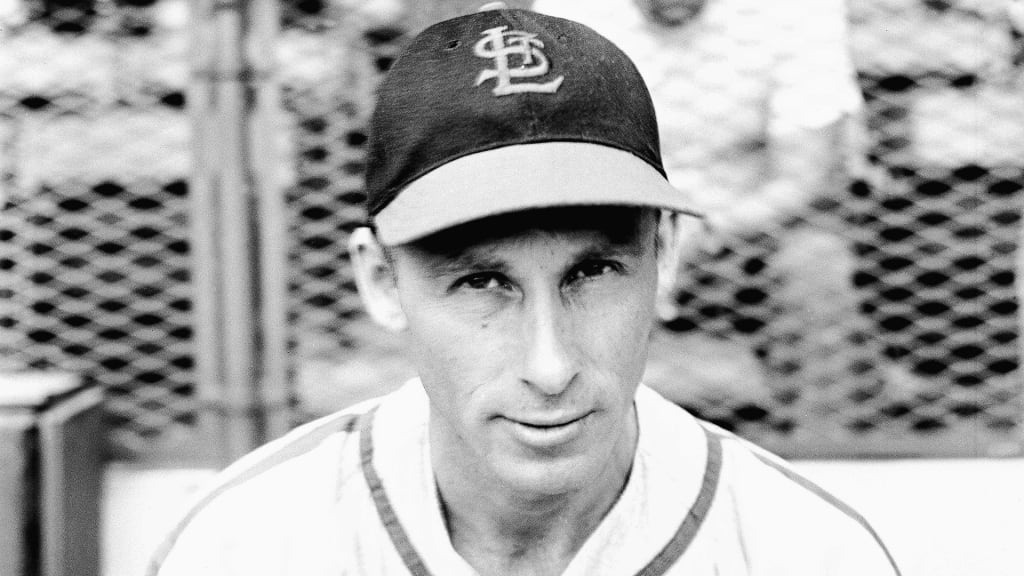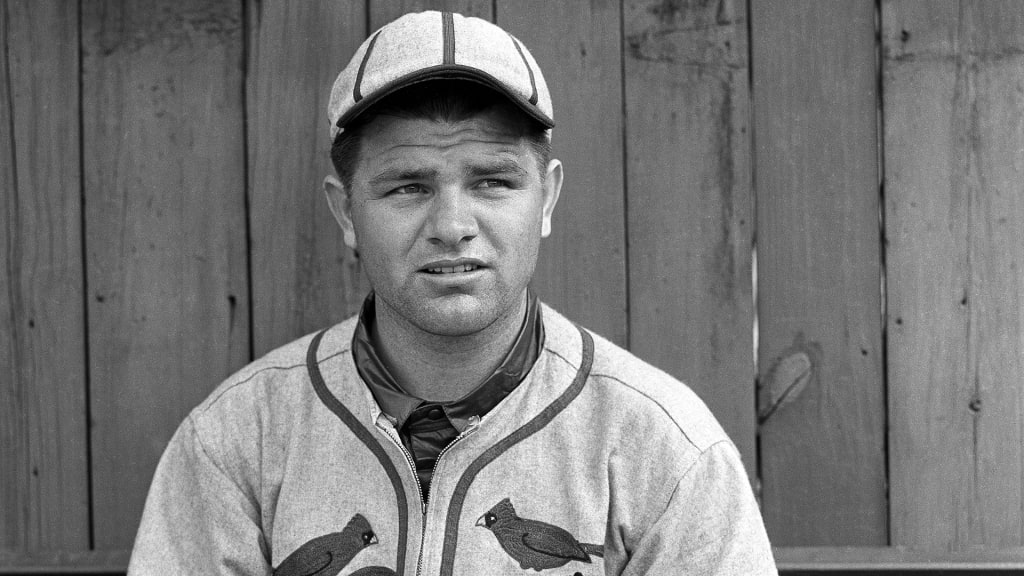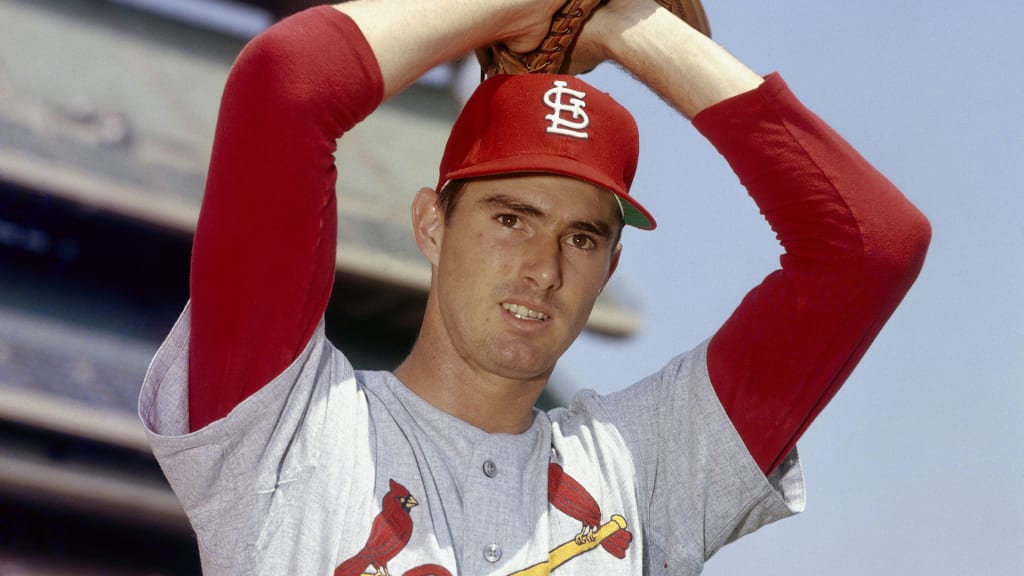
No one loves a good debate quite like baseball fans, and with that in mind, we asked each of our beat reporters to rank the Top 5 players by position in the history of their franchise, based on their career while playing for that club.
Here is Anne Rogers' ranking of the top 5 left-handed starters in Cardinals history. Next week: Relief pitchers.
1) Harry Brecheen, 1940, 1943-52
Key fact: Accumulated 38.5 WAR in 11 seasons with the Cardinals, which ranks first among left-handed starters
In 1943, sportswriter Roy Stockton began referring to a small, left-handed rookie pitcher as “The Cat” because of his quick, feline-like reflexes on the mound. This pitcher led or co-led the National League with a 1.000 fielding percentage three times and had four additional errorless seasons. He committed only eight errors in more than 1,900 Major League innings.
Harry “The Cat” Brecheen’s fielding was one aspect of his game that made him one of the best Cardinals pitchers in history. His success stemmed from exceptional control and a knee-buckling curveball and screwball. He wasn’t hard-throwing, and his presence on the mound -- 5-foot-10 and 160 pounds -- wasn’t intimidating. But he hid the ball and had a deceptive delivery that drew praise from pitchers and hitters.
“For a little guy, Brecheen gets a lot on the ball,” Dizzy Dean once said. “With the kind of control he’s got, he could thread a needle with the ball.”
Brecheen was a two-time All-Star, a two-time World Series champ and won the ERA title (2.24) in 1948, when he won 20 games and finished fifth in MVP voting. He ranks eighth on the Cardinals' all-time list in complete games (122) and winning percentage (.618 with a 128-79 mark) and tied for ninth with Bob Gibson in ERA at 2.91 (min. 750 innings). It took Brecheen some time to break onto the Cardinals' roster -- no team in the big leagues had a farm system as stacked as the Cardinals did in the late 1930s and ‘40s -- but he found an opening in ’43 when the Cardinals lost players to military service, and he made it count.
Brecheen’s 1946 season might have been his crowning moment, despite the 15-15 record in the regular season. He won three games in the World Series against the Red Sox -- including Game 6 as a starter and Game 7 as a reliever -- with a 0.45 ERA. After Enos Slaughter’s mad dash from first base to home gave the Cardinals the lead in the eighth inning of Game 7, Brecheen secured the final two outs with runners on the corners to give St. Louis its third title in five years.
“The Cat’s got a head, heart and guts,” Cardinals manager Eddie Dyer told The Sporting News after the game.

2) Howie Pollet, 1941-51
Key fact: Led National League in ERA in 1943 (1.75) and in ’46 (2.10)
Similar to Brecheen -- and pitching in the same rotation -- Pollet was a left-handed specialist rather than a powerful pitcher. But he made it work with a 3.06 ERA over nine seasons with St. Louis. With excellent control and one of the best changeups of the time, Pollet had varying speeds on his fastball and curveball that kept hitters off balance.
Signed in 1939, Pollet opened the ’41 season with three straight shutouts in Class A Houston. In August, he won his 20th game. According to Pollet’s biography on SABR, general manager Branch Rickey watched that win and broke his rule against calling players up midseason. Pollet won his first game and started eight times down the stretch of a tight pennant race with the Brooklyn Dodgers.
Pollet returned from military service in 1946 to win 21 games for the World Series champs. He won 20 games in '49, but he began to have arm trouble and was traded after starting the '51 season 0-3.
Longtime St. Louis writer Bob Broeg described Pollet as having "the sensitive features of a symphony violinist. The virtuoso of variable velocities, he can throw his fast ball and curve at several disconcerting degrees of speed, keeps batters off stride constantly and he's got the courage to throw his change of pace and get it over the plate when he's behind in the ball and strike count."
A little known fact: Pollet was the Cardinals' pitching coach for the 1964 World Series championship season.
3) Max Lanier, 1938-46, '49-51
Key fact: Tied with Pollet on the Cardinals' all-time list in shutouts with 20
After working on his control and breaking into the Majors with a powerful fastball and a sweeping curveball, Lanier won 45 games with a 2.47 ERA from 1942-44. In ’43, he led the NL with a 1.90 ERA across 213 1/3 innings. He was the hard-throwing southpaw of the rotation in the early ‘40s and won two World Series and made two All-Star appearances in his first stint with St. Louis.
In 1946, Lanier stunned baseball and broke his contract with the Cardinals to jump to the Mexican League. He, along with the other players who went to the Mexican League, were banned from Major League Baseball for five years. Lanier challenged baseball’s reserve clause in court, but when the Commissioner lifted the suspensions in 1949, the lawsuit was dropped. Lanier returned to the Cardinals for three more years, but he never regained the form that had made him one of the big leagues’ best left-handed pitchers.
In all, though, Lanier won 101 games for the Cardinals and accumulated 30.0 WAR.

4) Steve Carlton, 1965-71
Key fact: Eighth on the Cardinals' all-time list in strikeouts (951)
“Lefty” spent the bulk of his Hall of Fame career with the Phillies after the Cardinals traded him over a salary dispute. But he made an impact in the seven seasons he was with St. Louis -- in which he accumulated 20.9 WAR -- to jump-start his elite career. Carlton posted a 3.10 ERA as a Cardinal, with five consecutive seasons of 10 or more wins, capped by 20 in 1971. He was a three-time All-Star and helped the Cardinals to the 1967 World Series title with a 2.98 ERA and 168 strikeouts. He started Game 5 against the Red Sox and lost, but he pitched six innings with one unearned run.
After the Cardinals traded him to the Phillies for Rick Wise, Carlton won the first of his four Cy Young Awards in Philadelphia in 1972.

5) John Tudor, 1985-88, '90
Key fact: Leads all Cardinals pitchers with a .705 winning percentage and a 2.52 ERA (both min. 750 innings pitched)
The newly elected Cardinals Hall of Fame member won 62 games in five years for the Cardinals. His 1985 season was his best, helping the Cardinals to the National League pennant with 21 wins -- and leading the Majors with 10 shutouts -- and a 1.93 ERA. He started that season 1-7, but ended with a 20-1 run and finished second in Cy Young voting. His 0.938 WHIP also led baseball in '85. The soft-tossing lefty threw 881 2/3 innings over 125 starts (128 games overall) during his time as a Cardinal. He was a member of two NL pennant-winning teams and won at least 10 games in each of the four full seasons he pitched in St. Louis (he was traded to the Dodgers at the end of the ’88 season).
Honorable mention
• Bill Sherdel was 153-131 in 14 seasons for the Cardinals, winning 16 for the 1926 World Series champions and 21 for the ’28 National League pennant winners.
• Theodore Breitenstein accumulated 35.0 WAR in seven seasons (1891-96) as a Cardinals pitcher and outfielder. He won the ERA title in 1893 with a 3.18 ERA.
• Jaime García won 13 games for the 2011 World Series champions and had a 3.57 ERA over eight seasons with St. Louis.
